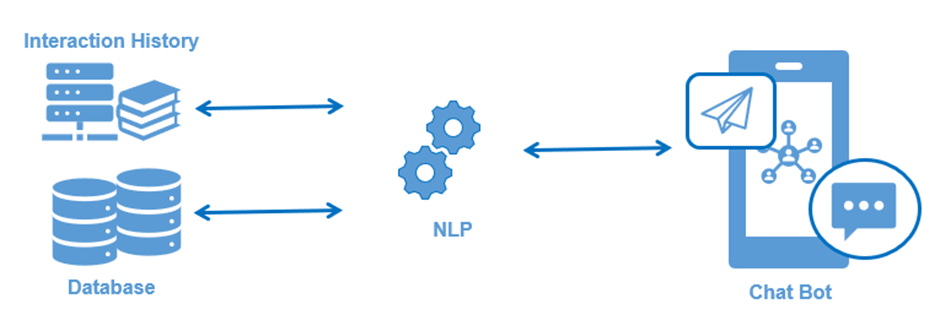Integrating NLP for Effective Submissions
- AlphaSquare Labs Content Desk

- Jun 11, 2024
- 3 min read
Large Language Models (LLMs) are transforming the integration of FDA regulatory guidance in pharmaceutical submissions. By leveraging advanced Natural Language Processing (NLP) capabilities, LLMs ensure that regulatory documents are comprehensive, accurate, and compliant with current guidelines. This article explores how NLP aids in integrating regulatory guidance, enhancing the efficiency and precision of pharmaceutical submissions.
Understanding Natural Language Processing (NLP)
Natural Language Processing (NLP) is a vital branch of artificial intelligence focused on enabling computers to interact with humans through natural language. The aim of NLP is to allow computers to understand, interpret, and generate human language effectively. In the context of pharmaceutical submissions, NLP involves using sophisticated algorithms and models to process and analyze vast amounts of regulatory text and data.
Technical Aspects of NLP in Regulatory Guidance Integration
Data Extraction and Structuring:
Named Entity Recognition (NER): This NLP technique identifies and classifies key entities in text, such as drug names, dosages, and regulatory terms. For example, NER can highlight critical components in FDA guidelines, facilitating the integration of specific requirements into submissions.
Part-of-Speech Tagging (POS): POS tagging involves marking up words in a text to correspond with particular parts of speech, based on their definition and context. This helps in understanding the syntactic structure of sentences in regulatory documents, crucial for accurate interpretation and integration.
Text Summarization:
NLP models can summarize extensive regulatory documents, extracting key points and requirements. This is particularly useful for pharmaceutical companies needing to quickly grasp updates to FDA guidelines and incorporate them into their submissions.
Contextual Understanding:
Transformer Models: LLMs, such as GPT-4, are based on transformer architecture, which excels in understanding context and generating human-like text. These models can analyze large volumes of regulatory texts and provide contextual analysis, ensuring that the integration of guidelines is both accurate and relevant.
Functional Benefits of NLP in Regulatory Integration
Enhanced Accuracy and Compliance: By using NLP, pharmaceutical companies can minimize the risk of human error in interpreting and applying regulatory guidelines. LLMs ensure a detailed and accurate integration of these guidelines, ensuring that all submissions meet the required standards.
Increased Efficiency: Traditional methods of integrating regulatory guidance are time-consuming and labor-intensive. NLP automates much of this process, significantly reducing the time needed to prepare submissions. For example, NLP tools can process and analyze thousands of pages of regulatory documents in minutes, a task that would take human experts days or weeks.
Scalability: NLP-driven systems can handle an immense amount of regulatory data. As the volume of regulatory guidance grows, these systems can scale accordingly, ensuring that pharmaceutical companies remain compliant without a proportional increase in manual labor.
Statistical and Qualitative Data on NLP Effectiveness
Efficiency Gains: Studies have shown that NLP can reduce the time required for document review and preparation by up to 50%. This is crucial in the pharmaceutical industry, where speed to market can significantly impact competitive advantage and patient access to new therapies.
Error Reduction: Implementation of NLP in regulatory submissions has been associated with a 30% decrease in compliance-related errors, according to industry reports. This reduction is due to the precision of LLMs in interpreting complex regulatory language and requirements.
Cost Savings: The automation of regulatory guidance integration through NLP can lead to substantial cost savings. Estimates suggest that companies can reduce their regulatory compliance costs by 20-30% using these technologies.
Qualitative Impact:
Consistency: NLP ensures that all parts of a submission are consistent with each other and with regulatory guidelines. This consistency is vital for maintaining the integrity and credibility of the submission.
Accessibility: NLP tools make regulatory documents more accessible to non-experts. They can translate complex regulatory language into simpler terms, enabling broader understanding across different departments within pharmaceutical companies.
In conclusion, integrating FDA regulatory guidance using Large Language Models and advanced NLP techniques offers significant technical and Functional benefits. By enhancing accuracy, efficiency, and scalability, NLP is transforming the way pharmaceutical submissions are prepared, ensuring they are comprehensive, compliant, and timely. The statistical and qualitative data support the efficacy of NLP in this domain, highlighting its potential to streamline regulatory processes and improve overall industry compliance.








Comments